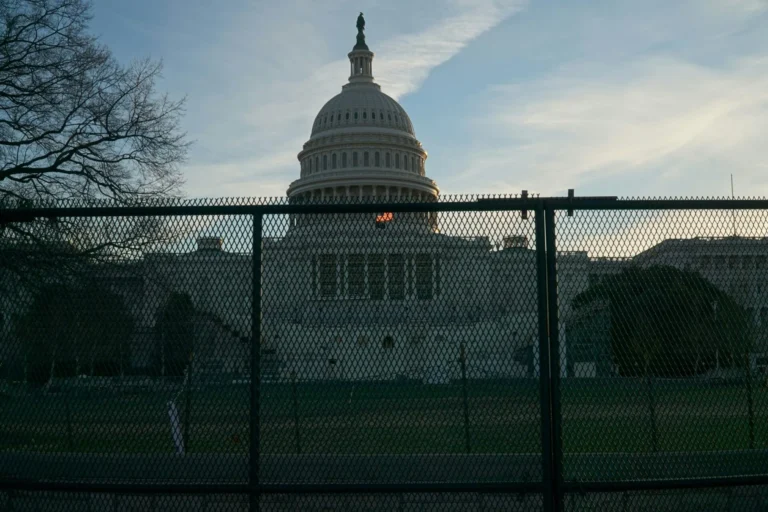By Cliff Montgomery – June 29th, 2011
“Germany was forced to agree to bail out Greece for the second time in a year,” stated The London Guardian on June 17th, “under strong pressure from the International Monetary Fund (IMF) following the resignation last month of its head, Dominique Strauss-Kahn.”
“Under its acting chief, the American John Lipsky, the IMF has taken a more hardline stance,” the Guardian continued.
In recent weeks, the IMF has warned Germany “that it would withhold urgently needed funds and trigger a Greek sovereign default,” stated the paper, “unless Berlin stopped delaying and pledged that it would come to Greece’s rescue.”
But there are a few problems.
One is Germany. It turns out that though the Germans concede “the need for the fresh bailout, Berlin is insisting that the banks and other private creditors holding Greek debt take losses as part of the rescue plan.”
So it appears that to some extent, the Big Banks plan to force another bank bailout on the Greek people.
The second snag is the Greek people themselves. Somehow, the Greeks have gotten it into their heads that they matter at least as much as the bankers. The people have started a general strike–a union-based protest that will shut down the country for two days.
It’s a drastic action for drastic times: The Greek government today voted to further cut essential services, and further tax their people to boot.
One other thing. Americans rarely hear how International Financial Institutions (IFIs) like the IMF really treat emerging market countries.
It may be the biggest matter behind this little drama.
The International Monetary Fund is an IFI which oversees the international financial system, for the declared purpose of ‘providing loans to developing member-state countries’.
“The IMF was established in 1945, having first been conceived at the Bretton Woods Conference in New Hampshire, USA in 1944,” states an informative article on the IMF’s history printed by SourceWatch.
“That conference saw representatives from forty four allied nations gather to craft new rules and institutions to regulate the chaotic global economy,” declares SourceWatch, pointing out that the period’s weak global economy helped bring on “the Great Depression and…two World Wars.”
“The outcome was the Bretton Woods Agreement which created two new multilateral institutions: the International Bank for Reconstruction and Development (IBRD), now known as the World Bank, and the International Monetary Fund,” continues SourceWatch.
But the U.S. “was at the time not just the most economically powerful nation in the world, but also the world’s largest creditor,” continues the article.
The inevitable result? America’s “proposal for a Fund which favored creditor nations – by placing the world’s debt burden solely on debtor nations…won out in the end,” according to SourceWatch.
The IMF initially provided short-term loans to countries lacking enough hard money to pay for their imports, as part of its stated effort to ensure international monetary stability. The loans would be made both from an impressive gold reserve and from IMF member contributions.
As a further assurance of economic stability the Bretton Woods Agreement created a multi-national system of fixed exchange rates, with the American dollar as its basis. To maintain the dollar’s strength, its value was pegged to its worth in gold.
But the U.S. ended the dollar’s gold-based value in 1971, thanks to such matters as the spiraling cost of the Vietnam War and its attendant inflationary pressure. Thus the IMF lost one of its chief reasons for existence with the stroke of a pen.
Therefore “during the 1970s and 1980s…the IMF had refocused to a large degree on lending to developing countries, both on providing finance and [on] encouraging ‘policies to stimulate growth,’ ” according to the article.
In 2003, former World Bank Chief Economist Joseph Stiglitz noted the sea change, stating that “the [original] Keynesian orientation of the IMF, which emphasized market failures and the role for government in job creation, was replaced by the free market mantra of the 1980s, part of a new Washington Consensus.”
“The Washington Consensus was so named because it was a common ideology of the IMF, World Bank and US Treasury,” which are all based in America, “that markets, free from ‘government intervention’ of any kind, held the key to development in rich and poor countries alike,” states the SourceWatch article.
“The impact of the Washington Consensus has been felt mainly through the IMF’s increasing use of loan conditions [ i.e., ‘conditionality’ or ‘tools of structural adjustment’] to force policy change in developing countries,” declares SourceWatch.
“Structural adjustment policies mean across-the-board privatization [i.e., business monopolization] of public utilities and publicly owned industries,” states the article.
“They mean the slashing of government budgets, leading to cutbacks in spending on health care and education,” SourceWatch continues.
“They mean focusing resources on growing export crops for industrial countries, rather than [on] supporting family farms and growing food for local communities,” states SourceWatch.
“And, as their imposition in country after country in Latin America, Africa, and Asia has shown,” SourceWatch adds, “they lead to deeper inequality and environmental destruction. For decades people in the Third World have protested the ways [of] the IMF and World Bank.”
And it gets worse. This global monetary system also “allows the US to run high deficits and it prolongs a situation in which capital flows ‘uphill’…from poor countries to the richest country of the world,” stated a fascinating independent financial study from 2006.
The Forum on Debt and Development (FONDAD), which produced the study, “is an independent [international financial] policy research center and forum…established in the Netherlands,” according to the Forum’s self- description printed within the 2006 report.
The study’s introduction, written by FONDAD Director Jan Joost Teunissen, makes clear who really owes whom by employing as a prime example ‘Latin America’s debt crisis’ in the early 1980s:
“It is now easy to understand why Professor Maria da Conceição Tavares shouted to me in 1982 that Latin America’s debt crisis had started with the foreign debt problem of the United States.”
“Briefly, Tavares’ argument was that because Western countries maintained the [US] dollar as the key currency of the system, and ‘petrodollars’ were recycled through the private banking system, [by]…the 1970s commercial banks were able to increase their role in the world financial system and lend huge sums of money to Latin American and other emerging market countries.
“Then, when the US central bank [i.e., the Federal Reserve] sharply increased its prime interest rates in 1979, to halt inflation and make the dollar attractive again to foreign investors, commercial banks extended new loans to Latin American countries so that these countries could continue to service their debts.
“These new loans were necessary because the interest rate on old loans had increased sharply – in line with the Federal Reserve’s prime rate.
“In technical terminology, the new loans were ‘roll-over credits’ [read, ‘continuous and exploding debt’ for emerging countries].
“[So] Instead of financing development in Latin America, …[money] went straight back to the banks. This was another reason for Tavares’ anger.”
“In 1984, [former European Central Bank President] Willem Duisenberg…told me:
‘The situation we are in now is completely absurd. A sound situation would be that the rich countries lend or give money to the poor countries. There should be an export of capital in the form of loans and grants from the rich to the poor countries. But, surprisingly, the richest country in the world, the United States, actually imports capital from all over the world. In this sense the United States is being financed by the rest of the world, including the developing countries.’ “





